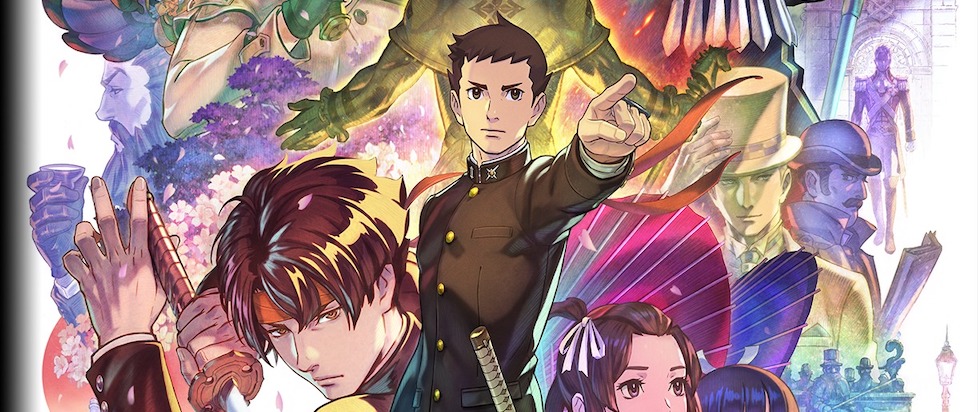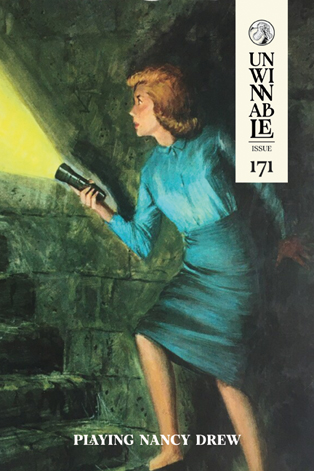
The Call is Coming from Inside the Courtroom

This column is a reprint from Unwinnable Monthly #171. If you like what you see, grab the magazine for less than ten dollars, or subscribe and get all future magazines for half price.
———
What does digital grass feel like?
———
Courtrooms, especially in the UK, are spaces where ritual is given great weight. Rise for the judge, take an oath, stay quiet and respectful at all times.
They’re also spaces of the truly absurd. The robes and wigs worn by barristers and judges are, quite literally, out of another era. Lawyers call one another “my learned friend.” Sometimes someone cross examines a parrot.
Sorry, that last one is just Ace Attorney. But the games capture the tension between the performative solemnity of the law and the real strangeness beneath it. Of course, they also inflate it for their own wacky hijinks, but in doing so they build up, and then immediately cut through, the traditional assumptions of the courtroom as a hallowed space.
Criminal court, supposedly, is a place where innocence or guilt is determined. Maybe this is the reason for the pomp and circumstance; the system needs to appear authoritative. But poke around the edges and the cracks start to show immediately.
This is something that also shows up in every Ace Attorney game. From Edgeworth’s first conveniently updated autopsy report, the conflict continually comes back to this issue of justice and the systems that purport to uphold it. It is also constantly showing those systems as flawed and able to be manipulated.
Still, through most of the mainline games, the courtroom itself remains a space of justice, at least as far as we see it. By the nature of the game casting the player as a defense attorney, the good guy (almost) always wins. The battle across the benches ends up going Phoenix’s (or Apollo’s, or Athena’s) way. Following the rules and rituals of the judgement chamber ends with a positive outcome.
Perhaps it takes a madcap twist or two; perhaps this disruption is actually crucial. But ultimately, the courtroom itself is still the space where a not guilty verdict is declared. They even have confetti to celebrate. Even if we can extrapolate that the same isn’t going on in other rooms of the same courthouse, we never experience those problems, or those spaces.

But Great Ace Attorney, the spinoff series localized in 2021 set in Meiji era Japan and Victorian London, manages to upend the sacred space of the courtroom. They’re still presented as this juxtaposition of the authoritative and the absurd, with rules on who can speak when highlighted directly next to a jury system that involves throwing fire around. But they’re also shown as spaces where justice fails.
The first and second trials, set in Japan and England respectively, both see the culprit getting away with their crimes. Racism is shown to be pervasive, and directly targets player character Ryunosuke Naruohodo. In the latter trial, evidence is tampered with within the courtroom itself. Any pretense of a space that does its job is wiped away.
Great Ace Attorney takes different swings than its predecessors in many ways. While Ace Attorney has always thrown up issues with its particular fictional legal system, and the Apollo Justice Trilogy (the 4th to 6th games in the mainline series) continually try to enact reform and then narratively retcon their own progress, Great Ace Attorney grounds its critique in something more historical – and systematic.
Although still fictionalized, Great Ace Attorney directly criticizes the power of the British Empire and how it puts pressure on the fledgling legal system of Japan, as well as protecting its citizens from facing punishment for their crimes. Money is shown to undermine the alleged fairness of the courts. Unlike other Ace Attorney games’ contextless problematizing of their self-created worlds, Great Ace Attorney makes real connections.
In doing so, its peeling back of the farce of the courtroom as a space for solemn, ritualistic justice becomes much more powerful. I’m only three chapters (out of ten) into my replay (for analysis podcast Turnabout Breakdown), but I do remember that it extremely does not stick the landing on its approach to empire. But in undermining the performative sanctity of the courtroom itself, Great Ace Attorney already makes a more coherent critique than any of its predecessors.
———
Jay Castello is a freelance writer covering games and internet culture. If they’re not down a research rabbit hole you’ll probably find them taking bad photographs in the woods.




